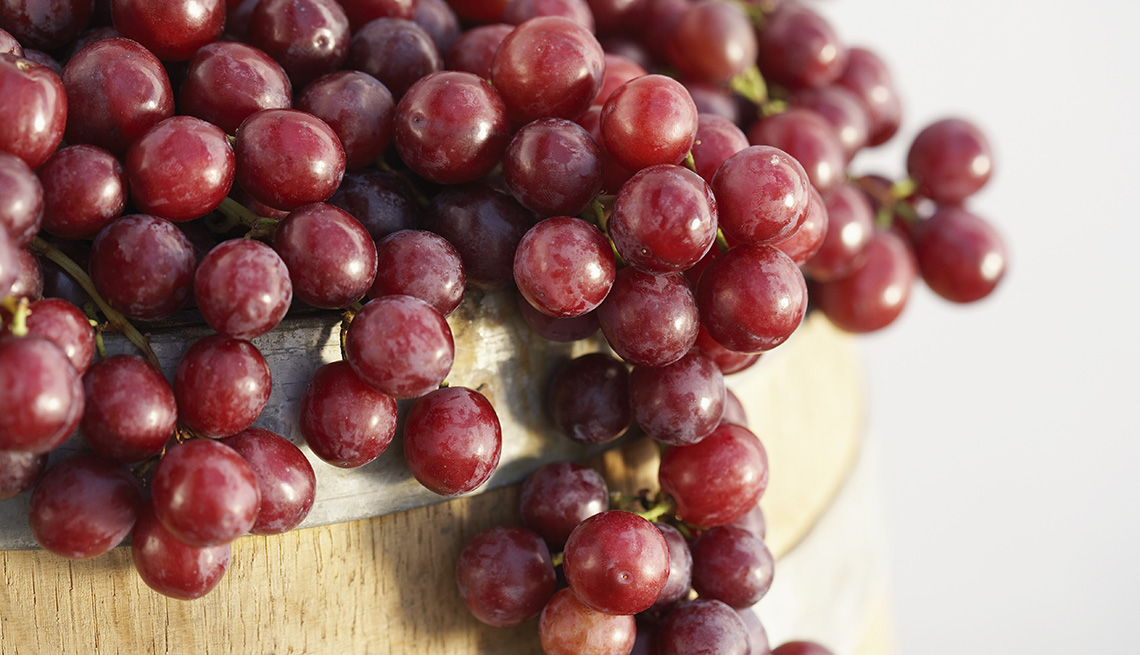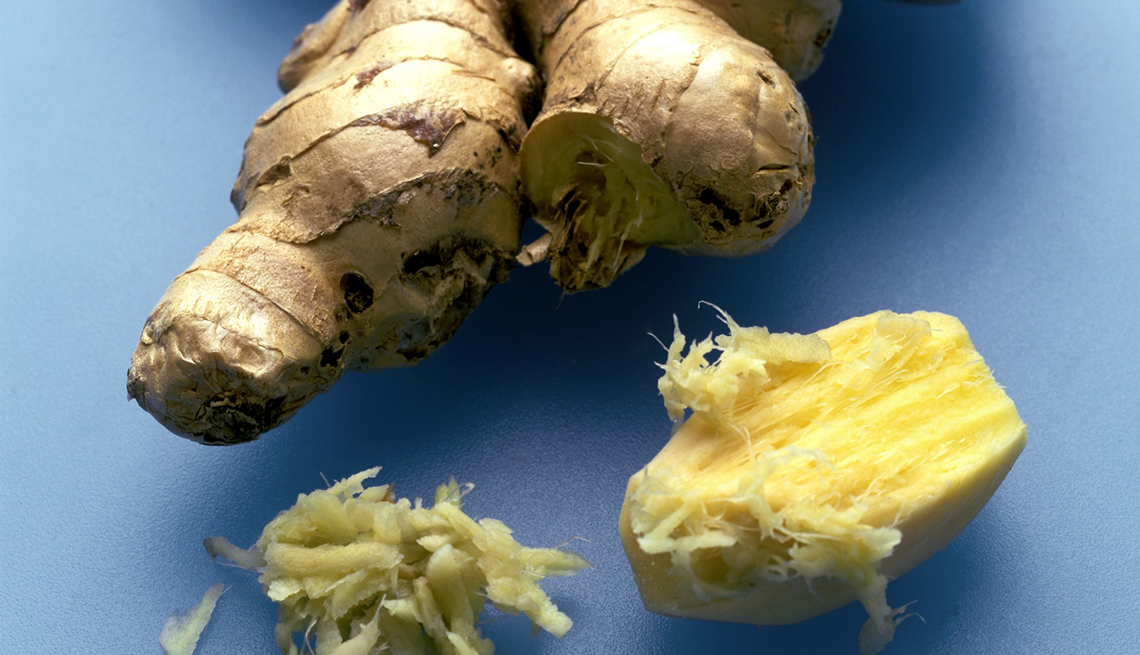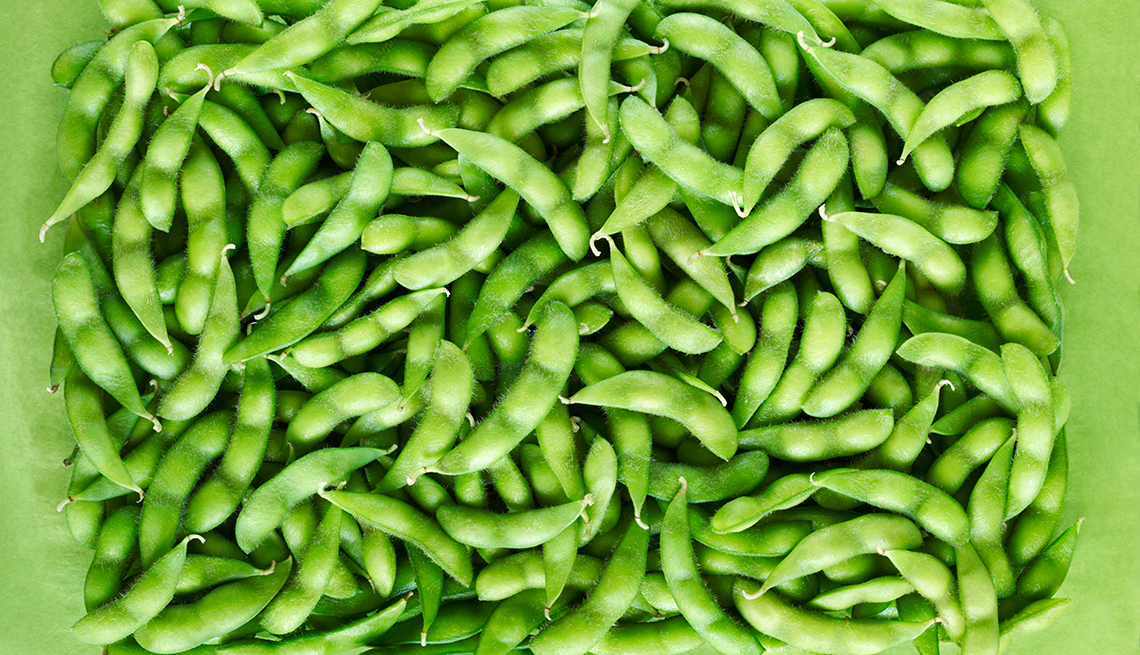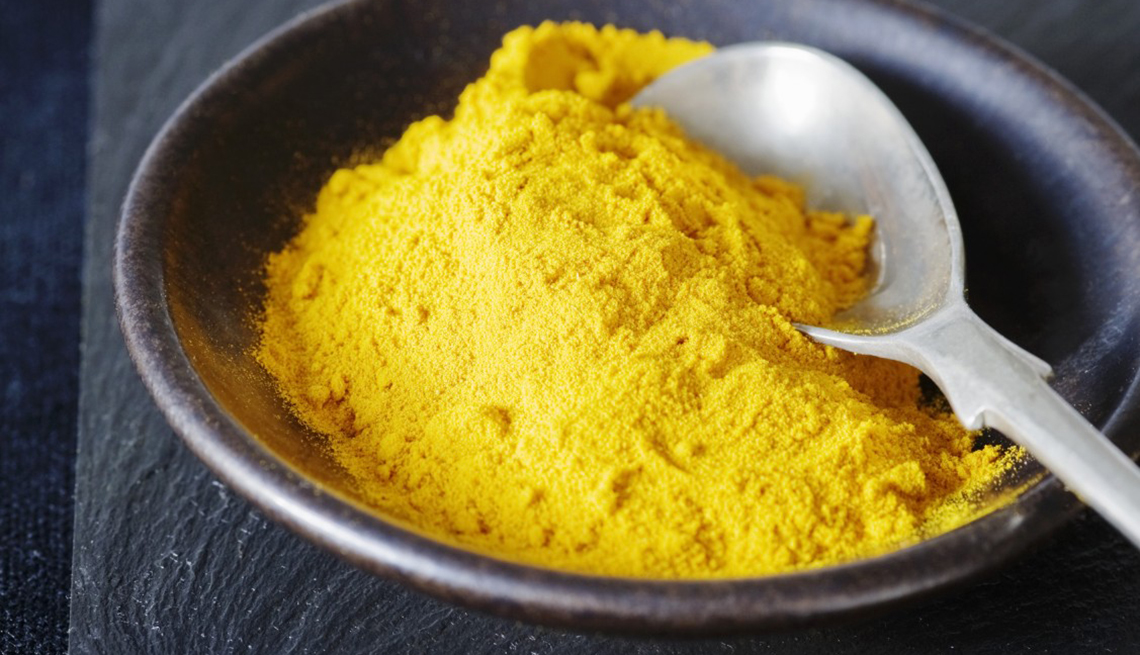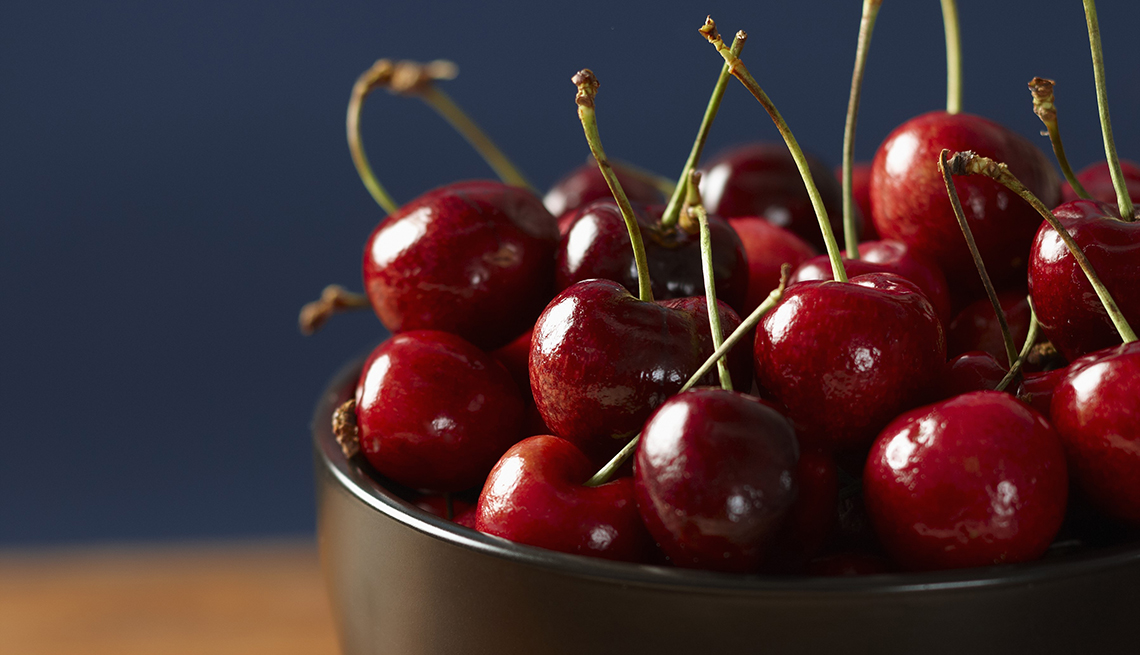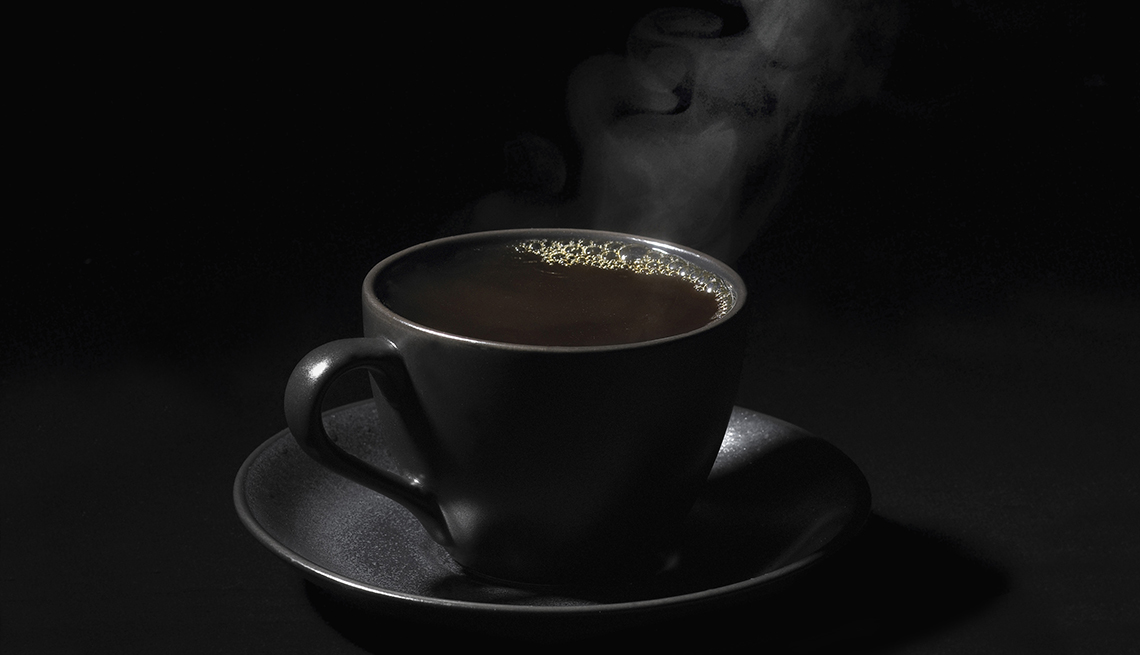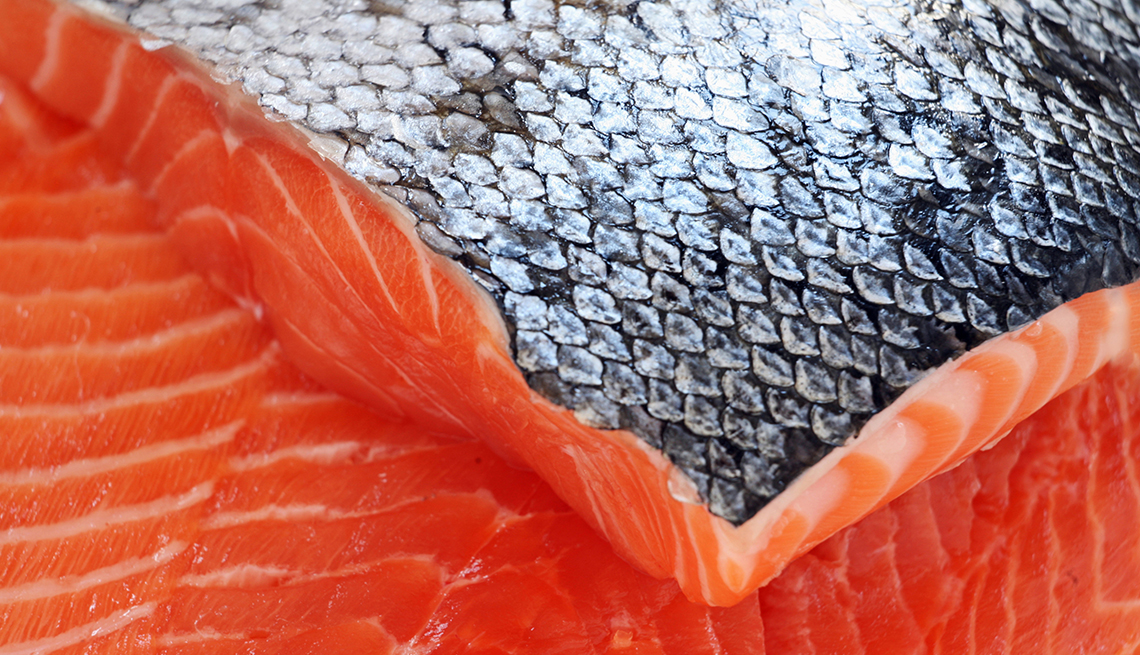Pain-fighting Foods
7 superfoods that ease pain. Plus, tasty recipes
En español | Got knee pain? Drink some soy milk. Sore back? Eat salmon. The right foods can ease your aches: Recent research suggests that some pack as much pain-fighting power as common pain medications like ibuprofen. And with mounting evidence that some pain-relief medicines may actually be dangerous for some individuals, these foods may be the better choice. "What we eat has a dramatic impact on levels of pain in the body," says Beth Reardon, M.S., R.D., a nutritionist at Duke Integrative Medicine at Duke University Medical Center in Durham, North Carolina.
See also: Berries for brain power.
The list of pain-fighting foods might surprise you. From fruits such as red grapes and cherries, to herbs and spices such as ginger and turmeric, to fish, soy products and even coffee, there's relief in quite a number of readily available, healthy foods. Read on for the best pain remedies to put on your plate and try some delicious recipes.
Red Grapes
This deeply hued fruit contains resveratrol, a powerful compound that blocks the enzymes that contribute to tissue degeneration. The evidence: In lab experiments at Rush University Medical Center in Chicago, resveratrol protected against the kind of cartilage damage that causes back pain.
Although the research is preliminary, it can't hurt to fill up on foods rich in resveratrol, including blueberries and cranberries, which contain other powerful antioxidants as well. Or have a glass of wine. "Resveratrol in red wine is far more easily absorbed due to the form it is in," says researcher Xin Li, M.D., Ph.D., a biochemistry instructor at Rush.
Recipe: Grapes and Shrimp With Honey
Adapted by Monica Bhide from How to Cook Indian, by Sanjeev Kapoor
Serves 4
1/4 cup honey
1/2 cup balsamic vinegar
1 teaspoon salt
1 teaspoon red pepper flakes
24 large red seedless grapes
16 jumbo shrimps (about 1 pound), peeled and deveined
8 skewers
2 tablespoons vegetable oil
1. Combine the honey, vinegar and 1/2 teaspoon of the salt in a nonstick skillet over medium heat. Cook for 3 to 4 minutes, until bubbly and thick. Remove from the heat and stir in the red pepper flakes. Keep warm.
2. Starting and ending with a grape, alternately thread grapes (3 in total) and shrimp (2) on each skewer. Sprinkle with the remaining salt.
3. Brush a large nonstick grill pan or cast-iron skillet with 1 teaspoon of the oil. Place the pan over medium-high heat until it is very hot but not smoking. Arrange the skewers in the pan and cook, basting with the remaining oil and turning frequently, until the shrimp are cooked on all sides, about 4 minutes.
4. Transfer the skewers to a serving platter. Drizzle with the sauce and serve hot.
Nutrients per serving (2 skewers): 210 calories, 9g protein, 34g carbohydrates, 1g fiber, 4g fat, 64mg cholesterol, 662mg sodium
Ginger
Long used as a digestive aid, ginger is also an effective painkiller. Almost two-thirds of patients with chronic knee pain reported less soreness upon standing after taking a ginger extract, according to a six-week study from the University of Miami. Those who consumed ginger also reported less pain after walking 50 feet than those taking a placebo — and they needed less pain medication. And new research suggests ginger may also help tackle post-workout pain.
"Ginger relieves pain by blocking an enzyme that's a key component of the inflammatory process," says investigator Christopher D. Black, Ph.D., assistant professor of kinesiology at Georgia College and State University in Milledgeville, Georgia. Two to three teaspoons a day should do the trick. "That's not an overwhelming amount," he says. "You could easily add that to a stir-fry or soup." Other options include ginger tea and beverages made with fresh ginger.
Recipe: Ginger and Chili Chicken With Basil
by Monica Bhide
Serves 4
2 tablespoons cornstarch
2 tablespoons water
1 pound skinless, boneless chicken thighs, cut into 1/2-inch cubes
2 tablespoons vegetable oil
2 dried red chilis
1-inch piece ginger, peeled and minced
2 tablespoons honey
3 1/2 tablespoons soy sauce
2 tablespoons rice vinegar
1 teaspoon grated lemon zest
12 to 14 fresh basil leaves, chopped
Thinly sliced, peeled ginger, for garnish
1. In a medium bowl, mix the cornstarch and water into a paste. Add the chicken pieces and toss well to coat.
2. Heat the oil in a wok or large skillet over medium-high heat until very hot. Add the chicken and stir-fry until it is cooked through and lightly browned, 4 to 5 minutes.
3. Add the chilis and minced ginger and stir-fry for another minute.
4. Stir in the honey, soy sauce and vinegar and cook for 1 minute or so, until the sauce is slightly thickened. Sprinkle with the lemon zest and heat through, about 30 seconds.
5. Transfer to a serving platter and top with the basil and sliced ginger.
Nutrients per serving: 255 calories, 26g protein, 14g carbohydrates, 1g fiber, 10g fat, 66mg cholesterol, 861mg sodium
Soy
Want to cut your osteoarthritis knee pain by 30 percent or more? Add some soy to your diet. An Oklahoma State University study found that consuming 40 grams of soy protein daily for three months slashed patients' use of pain medication in half. The secret lies in soy's isoflavones — plant hormones with anti-inflammatory properties, says main study author Bahram H. Arjmandi, Ph.D., R.D., now professor of nutrition, food, and exercise sciences at Florida State University in Tallahassee.
Tofu, soy milk, burgers, edamame: All are good options. But be patient. "It takes two or three weeks for it to take effect," Arjmandi says.
Recipe: Chicken and Edamame Stir-Fry
by Monica Bhide
Serves 4
1 pound skinless, boneless chicken thighs, cut crosswise into 1/2-inch-thick strips
Salt
Freshly ground black pepper
2 tablespoons peanut oil
1 teaspoon sugar
3 cloves garlic, minced
1/2 teaspoon Chinese five-spice powder
1 cup frozen shelled edamame, thawed
1 teaspoon grated fresh ginger
3 tablespoons teriyaki sauce
1 teaspoon sesame seeds
1/2 cup diced baby corn
2 scallions, thinly sliced on the diagonal
2 cups steamed white rice
1. Season the chicken lightly with salt and pepper.
2. Place a wok or large skillet over high heat and pour in the oil. As soon as the oil is hot, add the chicken and stir-fry for about 3 minutes, until the chicken is almost cooked through.
3. Add the sugar, garlic, five-spice powder, edamame and ginger, and stir-fry for 3 minutes more, stirring constantly so the garlic doesn't burn.
4. Add the teriyaki sauce, sesame seeds, corn and scallions. Continue to stir and toss until everything is evenly coated with the sauce and heated through. Serve hot over steamed rice.
Nutrients per serving: 407 calories, 26g protein, 34g carbohydrates, 3g fiber, 18g fat, 73mg cholesterol, 1,613mg sodium
Turmeric
A recent Thai study found that the spice common in many Indian foods fights the pain of rheumatoid arthritis as effectively as ibuprofen. Turmeric also seems to inhibit the destruction of joints from arthritis, according to National Institutes of Health – supported research on rats at the University of Arizona in Tucson.
Turmeric inhibits a protein called NF-kB; when turned on, this protein activates the body's inflammatory response, leading to achy joints. Investigator Janet L. Funk, M.D., and others are still working out the optimal dose, but "using turmeric as a spice in cooking is safe," she says.
Recipe: Cauliflower Sautéed With Turmeric, Pine Nuts, Raisins and Rosemary
by Monica Bhide
Serves 4
1/4 cup extra-virgin olive oil
1 small head cauliflower, broken into florets
1 teaspoon turmeric
Leaves from 1 sprig rosemary
Salt and freshly ground black pepper
1/4 cup golden raisins
1/4 cup pine nuts, toasted
1 teaspoon smoked Spanish paprika
1. Heat the olive oil in a medium skillet over medium heat.
2. Add the cauliflower, turmeric and rosemary and cook, stirring occasionally, until the cauliflower is brown and caramelized, about 8 minutes.
3. Season with salt and pepper to taste.
4. Stir in the raisins and pine nuts and cook about 1 minute more, until everything is heated through.
5. Transfer to a serving bowl and sprinkle with paprika.
Nutrients per serving: 166 calories, 3g protein, 13g carbohydrates, 3g fiber, 13g fat, 0mg cholesterol, 317mg sodium
Cherries
High amounts of antioxidants called anthocyanins are the key to cherries' pain-fighting power. In a U.S. Department of Agriculture study, participants who ate 45 Bing cherries a day for 28 days reduced their inflammation levels significantly. And a Johns Hopkins study of rats given cherry anthocyanins hinted that anthocyanins might also protect against arthritis pain. Unpublished preliminary data from the Baylor Research Institute in Dallas further showed that a tart-cherry pill reduced pain and improved function in more than 50 percent of osteoarthritis patients over an eight-week period. A cherry-juice drink likewise reduced symptoms of muscle damage among exercising men in a University of Vermont study: Their pain scores dropped significantly compared with the scores of those who did not drink the juice. Pain-calming anthocyanins are also found in blackberries, raspberries, and strawberries.
Recipe: Curried Chicken Salad With Cherries, Mango and Pecans
by Monica Bhide
Serves 4
3 tablespoons light mayonnaise
1 1/2 teaspoons curry powder
2 cups cubed cooked chicken
1 cup fresh cherries, pitted and sliced
1 small ripe mango, peeled, pitted and diced
1/4 small red onion, diced
2 tablespoons minced cilantro
Salt
Freshly ground black pepper
1/2 cup chopped roasted pecans
1. In a large bowl, mix the mayonnaise and the curry powder.
2. Fold in the chicken, cherries, mango, onion and cilantro. Season to taste with salt and pepper.
3. Sprinkle with the pecans and serve.
Nutrients per serving: 258 calories, 11g protein, 13g carbohydrates, 3g fiber, 20g fat, 32mg cholesterol, 382mg sodium
Coffee/Caffeine
Ever wonder why so many over-the-counter cold and headache medicines contain caffeine? Studies show it enhances the effects of common painkillers such as aspirin and acetaminophen. But recent data suggest caffeine has pain-lowering powers of its own — at least when it comes to the pain associated with exercise. University of Georgia researchers showed that moderate doses of caffeine — equivalent to two cups of joe — reduced post-workout pain by almost 50 percent.
And a caffeine buzz may boost your workout. Caffeine seems to raise your pain threshold, making it easier to keep exercising or work out harder than you would have otherwise. Just don't overdo it. "If you are going to work out, get a cup of coffee on the way," Black says. "There's good evidence it makes your muscles feel better."
Recipe: Cold Coffee Smoothie
by Monica Bhide
Serves 2
2 scoops low-fat coffee ice cream
1 cup chilled skim milk
1 cup cracked ice
1/2 teaspoon instant coffee, plus more for garnish
Combine all ingredients (except garnish) in a blender and blend well. Pour into 2 tall glasses. Garnish with a sprinkle of instant coffee and serve immediately.
Nutrients per serving: 117 calories, 6g protein, 13g carbohydrates, 0g fiber, 5g fat, 15mg cholesterol, 90mg sodium
Fish
The omega-3 fatty acids in fish that help keep your ticker in top shape may also tame the pain or inflammation of rheumatoid arthritis, migraines, and some autoimmune diseases, including Crohn's disease. Even chronic neck- and back-pain patients can benefit: In an open trial at the University of Pittsburgh, 60 percent of respondents experienced some relief after taking fish oil for three months, and almost as many dropped their pain drugs altogether. "We found we could substitute fish oil in place of drugs — an anti-inflammatory with no side effects in place of pharmaceuticals with side effects," says Joseph C. Maroon, M.D., clinical professor in the Department of Neurological Surgery at the University of Pittsburgh Medical Center and the study's coauthor.
Aim for two to four meals a week of fatty fish such as salmon, Atlantic mackerel, sardines, or trout — all top omega-3 sources. Halibut, light tuna, snapper, and striped bass are good, too. Not a fan of the fin? Consider a daily supplement containing both EPA and DHA — the key omega-3 fats — suggests Maroon. If you are taking a blood thinner, check with your doctor first; omega-3s may increase that drug's effects.
Recipe: Smoked Salmon Sandwiches With Watercress and Crème Fraîche
by Monica Bhide
Makes 4 sandwiches
4 thin slices pancetta (about 1 ounce total)
1/4 cup crème fraîche
8 slices white or whole-wheat bread
Freshly ground black pepper
1/4 medium English cucumber, very thinly sliced
8 to 12 small sprigs watercress, tough stems removed
1/4 pound thinly sliced cold smoked salmon
1. Heat a skillet over medium heat. Cook the pancetta, turning once, until well browned, about 5 minutes. Drain on paper towels. When it is cool enough to handle, break into small pieces.
2. Spread the crème fraîche generously on one side of each bread slice. Sprinkle a little black pepper on each slice.
3. Top 4 bread slices with the crumbled pancetta, cucumber, watercress and salmon. Cover with a second slice of bread. Cut each sandwich into halves or quarters, depending on your preference. Serve immediately.
Nutrients per serving: 245 calories, 15g protein, 27g carbohydrates, 4g fiber, 9g fat, 21mg cholesterol, 1,020mg sodium

